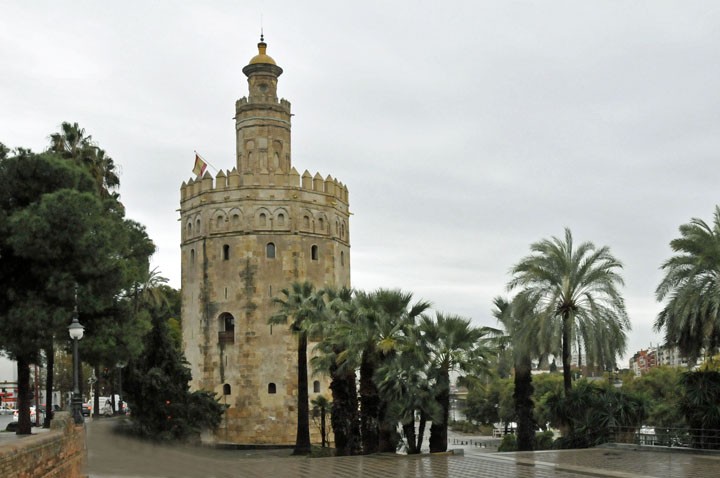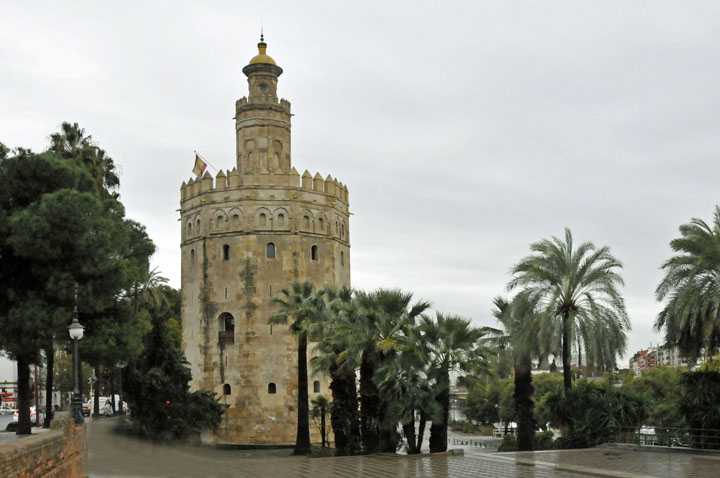
The Torre del Oro (“Tower of Gold”) reflects an era in which Seville, Spain, became the economic and cultural center of Europe. The source of the tower’s alluring name remains a mystery.
Seville lies along the Guadalquivir River about 50 miles upstream from the Atlantic Ocean. By the thirteenth century, Seville was one of the most important cities in the Andalusia region of southern Spain. In about 1222, the Almohads, an Islamic dynasty controlling Andalusia, built the Torre del Oro aside the river to protect the city against attack from Christian forces of the Reconquista (“Recapture”). The tower comprised a lower section in the form of a regular dodecahedron and an upper octagonal section made of brick. A large chain stretched from Torre del Oro to another tower across the river, lashing together a series of pontoons and creating a floating barrier to prevent attacking ships from entering the city. The plan failed. In 1248, forces under Ferdinand III of Castile smashed through the barrier, captured Seville and converted the tower to a chapel and then a prison.
Seville continued to grow and prosper under Christian control. After Christopher Columbus claimed the New World for the House of Castile, the port of Seville adjacent the Torre del Oro obtained a commission to handle all trade with the Spanish colonies. By the sixteenth century, Seville, with a population of up to one million people, was one of largest cities in the world, with Europe’s second largest cathedral. Portuguese explorer Ferdinand Magellan left from the Torre del Oro in 1519 for what became the first voyage around the world. A circular third level was added to the tower in 1769.
Stories seeking to explain the name of Seville’s famous tower range from the color of the straw in its mortar to the gold from the New World that passed by it. The most intriguing story links the name to the hair color of the mistress King Pedro I kept locked away in the tower. Whatever the origin of its name, the Torre del Oro marks a period properly called Seville’s “golden age.”



